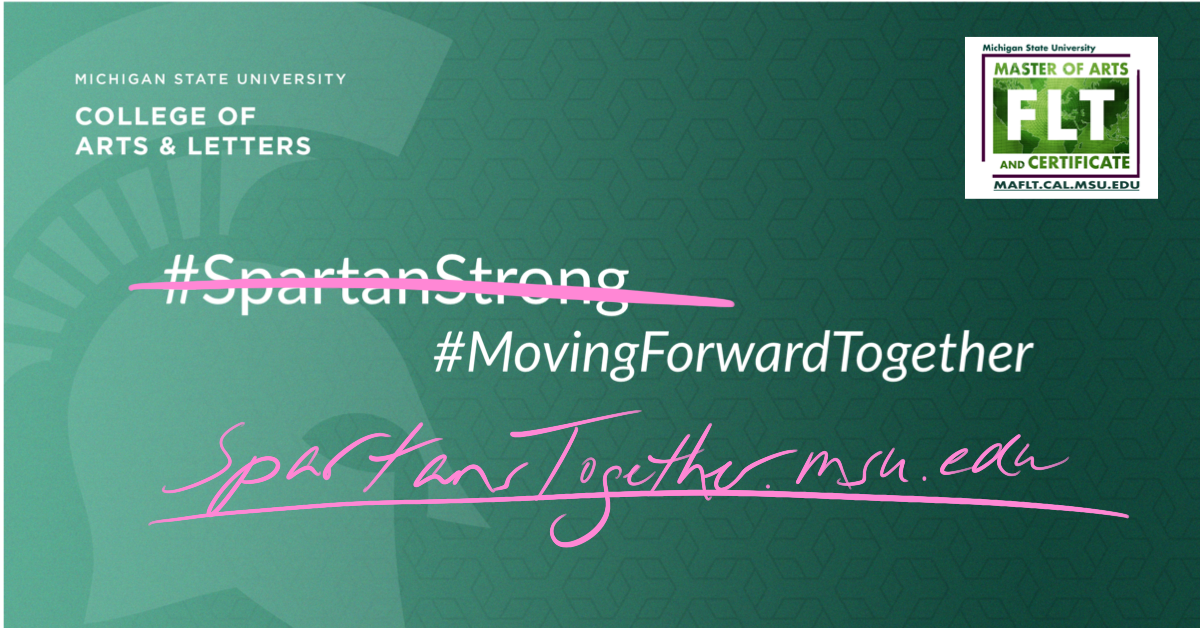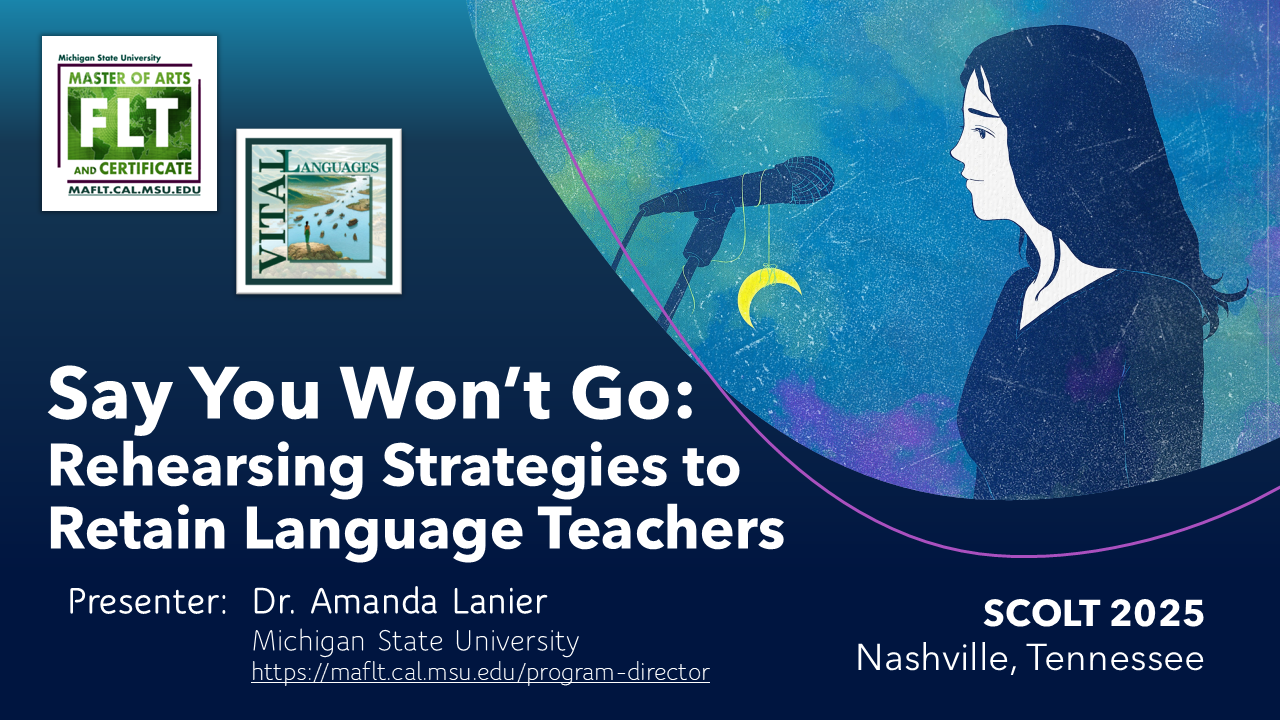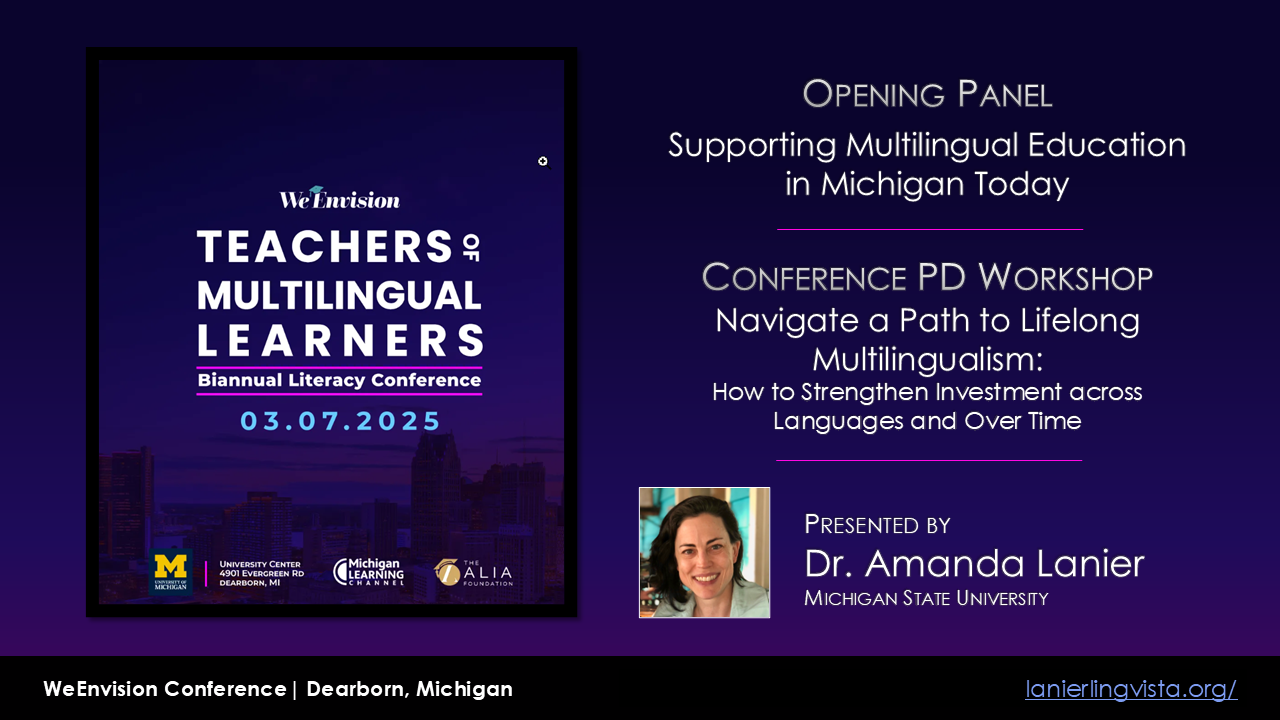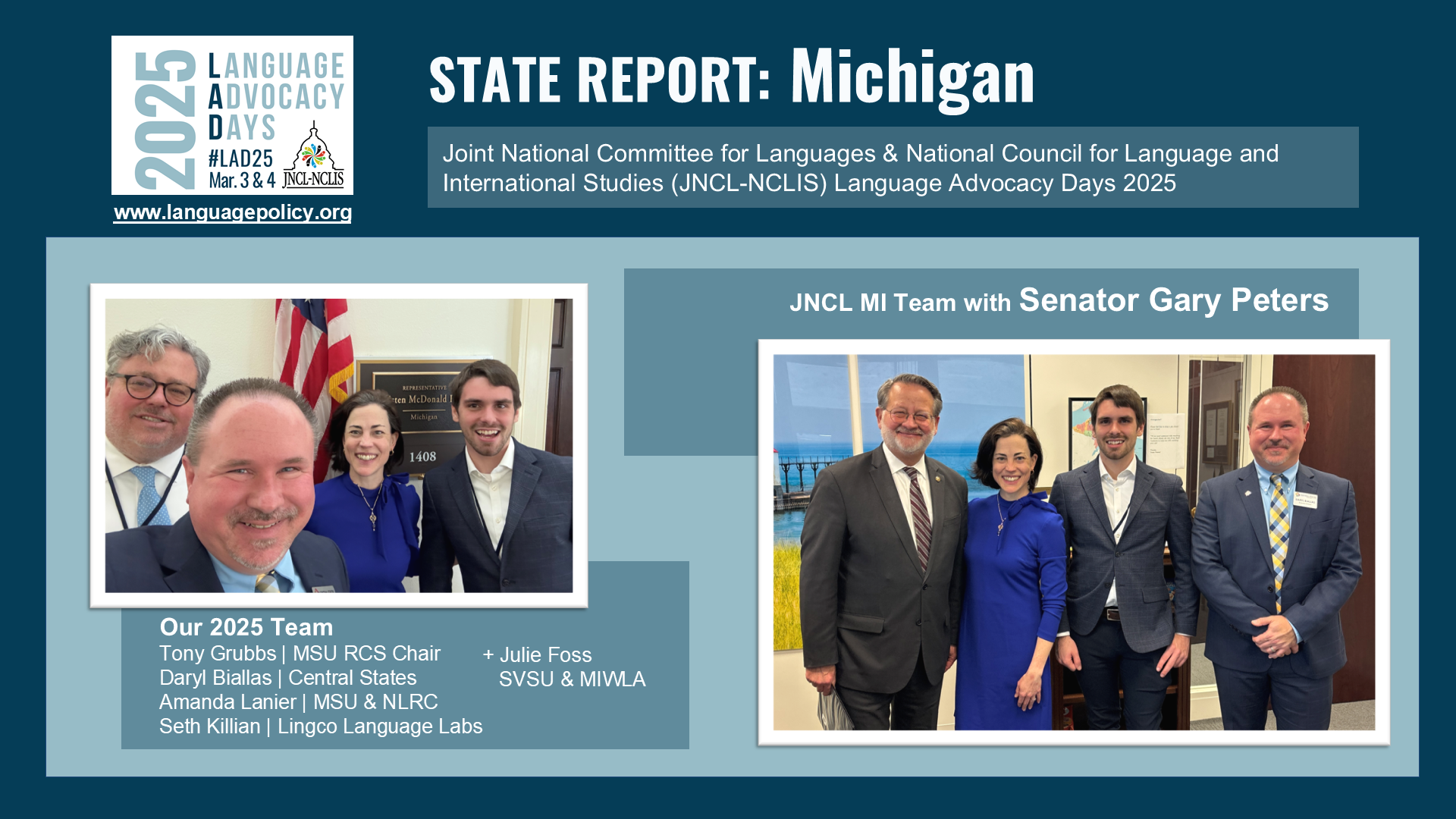Preparing for Post-Traumatic Response: Possible Steps for Impossible Times
Dr. Amanda Lanier | February 2025
Next week, MSU will be remembering the victims of the tragic and traumatizing events on Feb. 13, 2023, when a Lansing resident walked into a classroom building in the early evening with two handguns and pockets full of ammunition. Three students died. Five more were critically injured, including an international student who was permanently paralyzed. Many more members of the university community were left with lasting trauma after being locked down in their dorms and other buildings, tracking the shooter’s movements through a series of automated alerts.
https://msutoday.msu.edu/news/2025/feb-13-2025-events

Photos by author (2023)
The worst of the violence took place in one of the columned red-brick classroom buildings on MSU’s “front campus” that are so iconic of the college experience that filmmakers frequently use them for location shots. In press coverage from the ensuing days, there are photos of freshmen wearing “Oxford Strong” sweatshirts as they stumble out of their dorms into the night. These teenagers had survived a shooting at their high school in the Detroit suburbs, only to come to MSU in search of that idyllic college experience and survive another shooting.
I remember texting the woman who was then my graduate assistant from my home a few miles from campus, when we still barely knew where the shooter was supposed to be. She replied from the basement of the library, where she thought she was safe but had no idea when she could go home. A year and a half later, the day after the 2024 election, my current graduate assistant and I took a walk along the Red Cedar River instead of trying to focus on a to-do list that suddenly seemed inconsequential. She pointed to a dining hall along the way and said that she never eats there anymore. The last time was the evening of the shooting, when alerts announced the lock-down and reported that building as the shooter’s location minutes after she finished her meal.
Neither of them was directly affected on February 13, 2023. Neither was I. We didn’t witness the events. None of us knew anyone who was injured or killed. Of my 40 or so advisees at the time, only one lived in the Lansing area. The rest were scattered from western Michigan to Japan and might not have seen any news about the event at all. They were not directly affected.
Individuals who identify with the context and community of an attack may be affected, regardless of where they were and whether they knew the victims.
“Directly” affected is a fallacy. It is the wrong way to think about the effects of a shocking event on members of a community. Violence nearby, in a building not so different from the ones that you walk through every day, shakes your sense of safety and security. Simply being put in lock-down can be traumatic. Proximity to the location or personal relationship with the victims is not the measure of whether and how the event will impact people who identify with the community and context of that event.
The effects on individuals and groups will vary in ways that no one can anticipate.
Events like this can rattle your sense of purpose in ways that affect motivation and connection with others. Confronting the possibility of death, and particularly the death of young people, can and rightfully should raise existential questions about what efforts and concerns are important to us. For some people, that is a momentary reflection. They might post something on Facebook about remembering to hug our loved ones and then move on. For other people, it might be the last drop in a bucket that overflows into clinical depression.
It is also wrong to assume that the effect of traumatic events on anyone can be predicted based on their age, identity, or what we know about their life experiences. I don’t wear a sweatshirt announcing that my little brother died as a victim of gun violence twenty years ago. In fact, I have been very private about it, especially in professional settings. I am not sure anyone I work with knew about it until I brought it up in a Zoom meeting hosted after the shooting by our university’s WorkLife Office.
Among the earliest attempts to moderate the distress and uncertainty among faculty and staff, the WorkLife Office provided these Zoom meetings as a forum for discussing our own reactions and steps to take in support of our students. It was a well-managed Zoom. The presenter had useful recommendations, and other personnel were managing the backchannel, carefully monitoring the chat and responding to private messages. In that meeting, other attendees seemed almost dangerously impatient with their own emotional response. They said they expected themselves to have moved past the incident and gone back to productivity as usual: “It didn’t happen to me. It’s been days. Why am I still so upset?”
Where the courage came from, I will never know, but I thought it was time to bring up the story of losing my brother. At 23 years old, with a serious girlfriend and the beginnings of a career path that would let him write music and pay the bills, he was kidnapped from the parking lot of his apartment complex. After an increasingly frantic search throughout the Atlanta area over the next five days, my parents finally found out that he had been shot and left in a public park in another jurisdiction, in an incident that looked like gang-related violence but might have just been an effort to impress a gang.
Even as I write this, I am resisting the urge to click Delete and make that sentence go away. It won’t make the event or its memory go away. It happened almost twenty years ago, and I can still vividly remember the room where I was standing in Belgrade when I got the news, staring at the crib where a friend’s newborn would sleep that night while they told me all this over the phone. My silence about what happened would save you some discomfort, but it would also take away any potential at all that you might gain something from my choice to open up my private grief. You might respond better to trauma you encounter. You might be more willing to tell people how it impacts you. You might forgive yourself when a few days, or even 20 years, have not erased that impact. You might be better prepared to offer your empathy to someone near you who experiences trauma.
Responding post-trauma is never enough. We are responsible for connection and support before the traumatizing event takes place.
The other important fallacies about post-traumatic response, I think, have to do with who needs to respond, to whom, and when. I don’t teach undergraduates, and most of the graduate students I do teach never set foot on campus. That does not mean that I was exempt from offering a response from my position of leadership, regardless of where I stand in the university hierarchy. As did I, most chairs and directors sent an email stating that students and colleagues could reach out to them if they needed help and passed along a thorough list of resources provided by the university, including links to mental health services and opportunities to go to the library for adult coloring sessions. Some people scheduled listening sessions, but mostly we sent emails.
How many people who are really at the point of needing serious help feel like writing an email or clicking a link so that they can make an appointment at some future time with a stranger? There is a reason that thousands of people gathered on campus the following evening to hold up tiny candles in the dark. People needed to be together. For weeks afterward, there were massive piles of flowers and memorabilia at the feet of the much-photographed Spartan statue that looks out over the Red Cedar River so stoically.
In the wake of the violence, #SpartanStrong became a new meme and hashtag that appeared on signs and t-shirts and traveled around the internet. Now, you will notice that University Communications has replaced that phrase with “Spartans Together” as the guiding catchphrase of the ongoing remembrances for February 13.

Strong and stoic are highly valued traits in the U.S., especially for people socialized as men and people held up to a masculine standard of “professional” behavior. Sending an email to suggest that someone request an appointment or connect with someone else lets a person in a position of power recommend a high level of vulnerability without offering any vulnerability in return. “Together” is less catchy but much healthier than asking for stoicism when weeping side by side would be more appropriate. Unfortunately, times when we are together have become very scarce compared to the distant era before the COVID-19 pandemic made virtual meetings acceptable, if not preferred.
Admitting that a traumatic event has affected you may involve a level of vulnerability that is desperately uncomfortable, especially when we have not had time together, in person or virtually, to develop trust and rapport. In an academic setting, we might feel even more vulnerable, because the life of the mind is supposed to insulate us from the messy influence of emotions. I am not “touchy-feely” by nature. I am a T in the Myers-Briggs system. On the Clifton StrengthsFinder, I rated the strength of Empathy as my least useful asset out of 34 strengths. In the Enneagram system, I am a Five, “The Investigator.” I am an unusually outgoing Five, but a head-centered and emotion-suppressing Five nevertheless. Studying the Enneagram system has helped, though. Now, at least I notice when I suppress emotions and set them aside, only for them to erupt days or years later. I notice when I am resisting an action that I know is the right step because I am wary of the emotional toll.
You are not required to support and connect with others to the extent that the traumatic effects on you are worse, much less to the point of burnout.
Maybe I was not required to reach out to my students after February 13; I doubt that I would have been sanctioned for staying silent. I am not implying any criticism of the people who have stayed silent when they could have supported me, then and in other moments. Also, sometimes it is wise to limit our response. One of my primary takeaways from mandated training on relationship violence and harassment has been the reminder to acknowledge the limitations of our own skills and expertise, and the same advice applies in the context of post-traumatic response.
Unless your academic areas of expertise include psychiatric diagnosis and psychological care, support should not mean letting someone continue to lean on you when they should be seeking expert care for their mental health. You don’t want someone to believe that you can offer sufficient help in lieu of going to the medical professional or therapist whom they actually need. Ongoing reliance on you could also drain you to the point of burnout. Even a massive crisis does not justify giving up your hard-won boundaries.
The other reason I shy away from the vulnerability of admitting how trauma has affected me, and I think you or those you supervise might, too, is that vulnerability already feels like a way of life. I am relatively young, and female, and a parent of school-age children, and outside the tenure stream, and in an academic field in the humanities, which university administrators view as particularly vulnerable. I am far from the most vulnerable of academic employees, but even so I have built all sorts of defenses so that I can protect what little power I think I have. Why would I emphasize vulnerability, or invite people to take advantage of it, or offer it freely to anyone, including people who depend on me to advise and mentor them?
If that series of deflections sounds familiar, listen to this, and I will try to listen to myself too: My perception of my own power is irrelevant. Power and prestige and stability that have been (supposedly) granted to me by a title or a job description are irrelevant. I am relevant, in and of myself, as a human in community with other humans. Even as a human who ranked Empathy as my least useful strength on the StrengthsFinder, I have the power to offer a healing level of support and connection. Even if you belong to a group that has historically been underrepresented and marginalized in higher education, you have that power. At a time when everyone is reeling, connection with other people provides a highly effective antidote to the harm that traumatic events can cause, even from a distance.
In the absence of connection and support, without validation and consideration, trauma is more likely to cause lasting harm. If your administrators find numbers more convincing than stories, remind them how expensive that harm might be in terms of reduction in productivity and replacement of lost students and employees. With connection and support, including validation of the courage to be vulnerable, people can walk away from potential trauma with fully justified grief and even rage that last a long time and yet retain a balanced and healthy psyche.
That support and connection should not start to form after the traumatic event happens. Starting to prepare for the distress after the event is like building a fence around the pasture after the bull has escaped and trashed the china shop. We can say the china shop was far away and, oh, such an unlikely target, but the bull would have been a lot less likely to get to it with a fence in the way. The fence, if you’ll forgive the stretched metaphor, is made up of a long and consistent series of small and meaningful interactions on normal days, when emotions are under control and stress is relatively low and we are just passing in the hallway or sitting down for a regular meeting or getting a cup of coffee. Those small interactions build the fence post by post by post so that it is there when we need it, and we can stand on the safe side of it until the trauma lowers its jagged horns and settles down on the grass to ruminate.
Seek connection for yourself so that you will have attention and empathy to give.
I am not an expert in psychological care or in post-traumatic stress or in managing my own messy emotions. Simply speaking with the audacity of personal experience, without a citation in sight, I recommend these small steps: Make sure you, your students, and your colleagues know how to find the campus mental health care providers now, in times of peace. Make a habit of providing attention, empathy, and genuine curiosity now, whenever you can. Take care of yourself and build connections that support you so that you have attention and empathy to give. Do not wait to invest in connection and vulnerability until you are in the terrible position of sharing devastating news while caught up in its devastation yourself.
As the memes would have you believe, what does not kill you might actually make you stronger. But not stoically #SpartanStrong or strong to the point of self-sacrifice. Maybe just strong enough to share a story.

tl;dr
“Directly” affected is a fallacy. Proximity or personal relationship is not the measure of whether and how the event will impact people who identify with the community and context of the event.
Some individuals and groups will be affected differently based on their identity and experiences. The events at MSU led me to mention my brother’s death due to gun violence in a professional setting for the first time. It was difficult, but I hoped that the openness and the acknowledgement that grief lasts for a long time would be beneficial to others.
Post-traumatic response is never enough. We are responsible for connection and support before the traumatizing event happens. In the absence of connection and support, without validation and consideration, trauma is more likely to cause lasting harm. That support and connection should not start to form after the traumatic event happens.
You are not required to support and connect with others to the extent that the traumatic effects on you are worse, much less to the point of burnout. We have to acknowledge the limitations of our own skills and expertise. Unless your academic areas of expertise include psychiatric diagnosis and psychological care, support should not mean letting someone continue to lean on you when they should be going to a mental health professional.
Make a habit of providing attention, empathy, and genuine curiosity now, in times of peace. Do not wait to invest in connection and vulnerability until you are already in the position of sharing terrible news while caught up in its devastation yourself.
Find out how to reach mental health care providers and resources and share them with your students, and your colleagues before traumatic events take place. See below.
RELATED NEWS AND RESOURCES
MSU Communications Hub for February 13 remembrance:
https://spartanstogether.msu.edu/messages
Broad Museum Exhibition:
Art in the Aftermath: Healing Gun Violence through Artivism (February 5-13th)
https://broadmuseum.msu.edu/exhibition/art-in-the-aftermath-healing-gun-violence-through-artivism
Art in the Aftermath: Healing Gun Violence through Artivism is an exhibition of activist art produced by individuals affected by our nation’s epidemic of gun violence. Held in conjunction with the second commemoration of the violence experienced by the MSU community on February 13, 2023, the exhibition serves as an outlet for creative expression, harnessing art as an agent of transformational change. The healing power of art will be on full display through artworks and projects presented by national and international figures like former Beatles drummer Ringo Starr and Parkland activist Manuel Oliver, as well as MSU professor Marco Díaz Muñoz and others. At its center, a display of the Soul Box Project will anchor the space of the museum’s Alan and Rebecca Ross Education Wing, which also offers an invitation for visitors to contribute their own thoughts and messages. The exhibition will be accompanied by a variety of free events and opportunities to make art in a safe and healing environment to raise awareness around gun violence prevention.
National Institute of Mental Health: Coping with Traumatic Events
https://www.nimh.nih.gov/health/topics/coping-with-traumatic-events
The following resources are for the MSU community. If you are at a different institution, look for comparable resources or remind your administrators, HR, mental health providers, center for pedagogical support, etc. that they are needed.
iteach.msu.edu > Resources for Teaching After Crisis
Extensive and recently updated “playlist” provided by the Center for Teaching and Learning Innovation: https://iteach.msu.edu/pathways/346/playlist
Council of Graduate Students > Resources > Health and Wellness
https://cogs.msu.edu/resources/health-wellness/
MSU Police and Public Safety – Survivor Support
https://dpps.msu.edu/survivor-support
MSU Counseling and Psychological Services – in person and online services
https://caps.msu.edu/resources
… And additional materials including a Virtual Care Kit and the Spartan Bucket List to “feel more connected to the MSU community”




